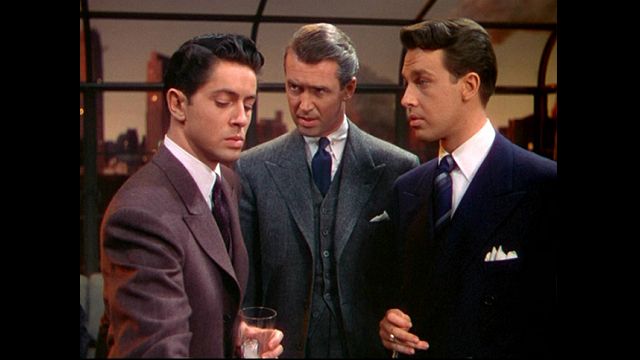Rope is my second favorite movie by Alfred Hitchcock. When I saw it as a relatively-angry closeted teenager with a chip on his shoulder, I identified with the ghoulish black humor within the text while still also appreciating the totally gay subtext within the film. Based on the 1920s murderers Nathan Leopold and Richard Loeb, two wealthy young men rumored to be in a homosexual relationship before they murdered and buried an acquaintance for the thrill of it, Rope continued two problematic trends in depicting queerness: equating queerness with predatory behavior/pedophilia and equating queerness with murder and death. That is to say, lesbians and homosexual men were frequently turned into mentally-disturbed murderers and outcasts who deserved their shunning from society. Rope had two gay men starring as the lead characters and was adapted by gay screenwriter Arthur Laurents (who was in a relationship with Farley Granger at the time), but this did little to curb the idea that gays were thrill-junky deviants who deserved their fate. And, I love it.
This is to say that having representation behind the camera does not necessarily mean that those creators are obligated to remedy problematic tropes within their media. When Roland Emmerich created his 2015 film Stonewall, a high-profile portrayal of an important flashpoint in gay history, his goal wasn’t to upset the heteronormativity that gave him the financial freedom to finally wrestle with his homosexuality and apolitical history. Instead, Emmerich wanted to create a homosexual movie that created an entry point for those sheltered heteronormative audiences who have no knowledge of gay culture or history. Instead of creating a story that related to the actual narrative, Emmerich proceeded to use many problematic tropes of cinema past in order to comfort heterosexuals about their understanding of queerness. That is to say, Emmerich created a movie that had predatory behaviors, demonized most gay sex, and pushed queer (of both genderqueerness and queer sexuality) people of color to the background.
The constant volume of media consumption with specific beats and tropes normalizes even the most problematic of ideas; that is to say, because we all exist under the same blanket of media, people who don’t exist within the dominant straight white male construct can embrace or even internalize racist, sexist, homophobic, transphobic and other problematic tropisms. At this point, I’m not even talking about the problems of intersectional progress (the idea that a queer person is automatically not racist, a woman is automatically accepting of the trans identity, or that black creators can’t be homophobic or anti-semetic), but the problems of self-identity progress (the idea that a queer person has internalized homophobia, that a black person can be racist, or a transperson can embrace transphobic belief structures). A queer person, or even a team of queer people, has the ability to make a product that expresses anti-queer ideas, in no small part because they have not yet learned how to challenge the constructions of modern society.
This stems from a realization that a queer team of people can make a horror film where the one person who survives (on screen; may be doomed post credits) is a straight white man (this film will remain unnamed). Queer people of various identities are murdered all over the place while other characters are created whole cloth from the hoariest of tropisms. No creator has an obligation to move the shape the culture into what we want. Just because somebody is gay, they don’t need to lift a finger to improve gay relations (*ahem*Bret Easton Ellis*ahem*). As an audience member, we can choose to accept or look over problematic ideas (even ones that directly affect us). But, we should strive to name what we are witnessing and try to challenge the hurdles that we can identify.
Nobody deserves a free pass. We are all problematic.

